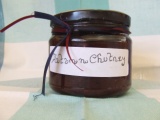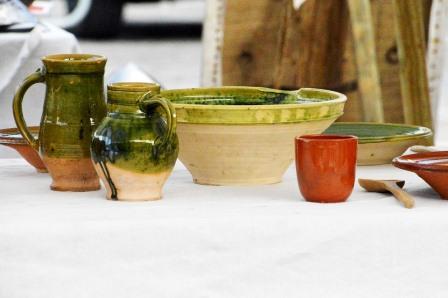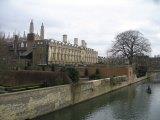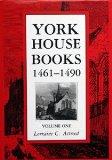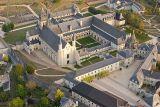We thank our branch member Barbara Gaskell Denvil for her kind permission to use this article here. It was first published on 30 August 2014 on her own website.
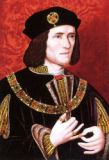 Very little reliable documentary evidence survives from the Middle Ages. The life and times of Richard III therefore remain a period of frustration and fascination for historians, scholars and interested amateurs alike. So why is it – when one very clear contemporary document survives from that period – that so many people choose either to ignore it, or disbelieve it?
Very little reliable documentary evidence survives from the Middle Ages. The life and times of Richard III therefore remain a period of frustration and fascination for historians, scholars and interested amateurs alike. So why is it – when one very clear contemporary document survives from that period – that so many people choose either to ignore it, or disbelieve it?
This one original and incontrovertible document dates from 1484. It sets forth in plain language (of the time) the entitlement to the throne of the man crowned Richard III, and states that, after certain facts were brought to light which made it clear that King Edward IV’s sons were now considered illegitimate and young Warwick, Clarence’s son, was debarred by his father’s attainder, Richard, at that time Duke of Gloucester, stood next in line.
After lengthy investigation and consideration of the newly disclosed situation by the Royal Council and the members of Parliament originally called to London for the expected coronation of the young prince, (most of whom were present) the agreed conclusion was that the crown should be offered to Richard, who was already ratified as Protector of the Realm. He was petitioned by the three estates, being the Lords Temporal, the Lords Spiritual, and representatives of the Commons who included a good many leading citizens of London. He was officially and legally asked to take the throne. It could actually be said that he was elected. Indeed, the wording of Titulus Regius includes the words ‘this Eleccion of us the Three Estates’, And yet he is consistently accused of being a usurper, and of having ‘seized’ the throne.
The accepted modern meaning of the verb ‘to usurp’ according to the Shorter Oxford English Dictionary, is simply: “To take a position of power illegally or by force.” Using this definition alone, it is perfectly clear that a man who was asked after due deliberation by England’s government to accept the throne, a right which was then ratified by the full parliament, did not in any manner usurp that position.
However, the modern definition of usurpation does not always sit easily in history. After the initial tyranny of kings was firmly established in 1066 with the unarguable usurpation of William I, over subsequent reigns England gradually began to modify and moderate her attitude to the royal rights of inheritance and the power of both kings and lords of the realm. Unlike the French model which continued doggedly with absolute power resting in the hands of royalty, England changed, adapted, and finally adopted a system of government by which an alternative administration could substitute for the rule of her monarch in certain matters when he was considered incapacitated either by age or health.
The Plantagenet line continued to uphold the right of kings to pass down the crown to their sons or grandsons, but clearly this was not always possible and under such circumstances, suitable but less direct heirs were necessarily sought within the bloodline. With this in mind, accusations of usurpation have been levelled against the first Lancastrian king, Henry IV who took the throne in 1399 and even against King Edward IV (1461). This went to the heart of the Wars of the Roses, but it is important to remember that in both cases, i.e. the enforced abdication of Richard II and the crowning of Henry IV as monarch in his place, and later the official acceptance of Edward IV’s father Richard, Duke of York, as the heir to Henry VI, these were actions carried out in circumstances where the monarch of the day had forfeited confidence and support by showing himself to be dangerously unfit to rule. And, of course, both these irregular successions were enacted and confirmed by Parliament. The term ‘usurpation’, therefore, now depends on whose side the speaker is on. Clearly the succession rights of kings were not inviolate and the later opinion (of Tudors and Stuarts, for instance) that an anointed monarch held an unarguable God-given right to absolute power, did not at all apply in the 15th century.
In 1483 following the death of Edward IV, it was expected that his eldest son would inherit the throne as Edward V. Yet shortly before his coronation, Robert Stillington (Bishop of Bath and Wells) announced that Edward IV’s marriage to the mother of the heir to the throne had been, to state it simply, bigamous, and that therefore all his children were illegitimate. Stillington was an important and respected ecclesiastical figure, and a previous Lord Chancellor of Edward IV, so his word would have been taken very seriously indeed. It is hard to see what possible benefit he would have gained from lying. Indeed, a good deal of detriment was the far more likely result had his story been false. His announcement, however, would never have been accepted without enormous investigation. Whatever proofs he offered we can no longer know. There is no surviving record of his exact report, nor of any witnesses called or other evidence shown at the time. But the lady who was named as Edward IV’s first wife was the Lady Eleanor Talbot, daughter of the Earl of Shrewsbury and sister to the Duchess of Norfolk, a widow and member of a noble and highly important family. Not someone to make the subject of ludicrous and improper rumours. The Lady Eleanor was now deceased, but she had been very much alive when Edward married Elizabeth Woodville, the mother of his children. Many close and high-powered members of Lady Eleanor’s family were still alive and would certainly not have stood silent if they knew the lady was being wrongfully slandered.
Some now choose simply to disbelieve Stillington’s claim. Yet they have not one shred of evidence to support this, nor one hint that this first marriage never took place. Certainly direct proofs that it did take place are also lacking. A few bewildered souls ask where’s the marriage certificate? But no such thing existed in 15th century and you could, for instance, take a lady’s hand, vow to wed her, and if she accepted, you then tumbled her into bed to consummate the match – and lo and behold – you were legally man and wife. The church was naturally not happy with this sort of clandestine affair without banns being called and often without witnesses – but it happened all the time and it was legally binding.
That King Edward IV favoured this type of thing was blatantly obvious, because that’s also exactly what happened the second time around. He wed Elizabeth Woodville in secret, in exactly that same manner. Indeed, he is often said to have ‘married for love’ – an unusual thing for a king in those days. But it was a very strange sort of love – for he made no mention of his secret wedding for 5 whole months. During those months the lady was never invited to the palace, she was entirely unacknowledged, her existing sons (she was a widow), instead of being taken in and elevated by the king, were given elsewhere as wards, and the king even sent his courtiers off abroad to start negotiating for a foreign princess to become his wife. But then, quite suddenly after those long silent months, to the bewilderment of almost the entire country and the dismay of most of the lords. King Edward announced the marriage. He brought his suddenly admitted queen to court, and that was that. A clandestine wedding led to a new queen and eventually a parcel of royal children.
So had he done this on other occasions in the past, yet never acknowledged it? Certainly Lady Eleanor Talbot came into some unusual bequests for which there is no known explanation, nor clear manner in which they could have been acquired. She then retired into permanent religious seclusion.
It does seem strange to many that this wronged and misused lady did not complain, did not announce her legal status as queen, nor denounce her legal husband, even when he took another wife. I have no answer to this beyond pointing out the logic of the situation. This was a high-born lady, and ladies, especially of a religious nature, did not whine or openly humiliate themselves by publicising the fact that they had been used, bedded, ravished, and then abandoned. Nor did they try to cause rebellion and unease (in a land so recently returning to peace) by accusing the king of dishonesty and immorality. She also ran the risk, if she made public announcements, that the king might deny the marriage and thus humiliate her further. Instead she accepted his apology and his gifts (my assumption), though continued to act (as in the manner of making her last will and testament) as a married woman with a living husband. And after all, while the king lived, it was a personal matter anyway and did not yet affect government or the people. It was not until he died and his eldest son’s legitimacy was in question, that the truth of this situation became politically imperative.
So with Edward V no longer considered of legitimate royal descent, Richard, Duke of Gloucester, stood as the one direct and legally legitimate heir.
The document itself (Titulus Regius) states clearly that incontrovertible evidence existed and could be forthcoming if and when required. It was later stated that proofs had already been brought before the Council “authentic doctors, proctors and notaries of the law, with depositions from divers witnesses.” Lady Eleanor Talbot’s powerful family surely stood witness. Certainly none of these relatives came forward to deny the claim, or to defend the lady’s honour by refuting the existence of this clandestine marriage. So why doubt such proofs existed? People were no more stupid at that time than they are now and it is highly ridiculous to presume that they would have accepted such a dramatic and inconvenient fact on the eve of the new young king’s coronation, unless they were well and truly convinced.
The frequent modern assumption that Stillington’s claim of bigamy was not only untrue but a clear manipulation by the evil and ambitious Richard III to usurp and seize the throne, is not only a leap of huge unproven prejudice, but it completely and naïvely overlooks the known power and position of the Royal Council and Parliament of the day. Ignoring the delightful genius of Shakespeare’s dramatic fiction, and the less delightful fiction of Tudor chroniclers who supplied the stories he told, we should at least respect the experience and intelligence of the lords, remembering also the obvious precedent of parliamentary decision regarding Richard II and Henry VI as mentioned above.
Stillington’s announcement must have been made during the latter half of May 1483. It is clear that in the following weeks the Royal Council and those representatives of Parliament present in London met in discussion many times.
The supposition that Richard of Gloucester had the power to threaten and bully all those poor cringing medieval lords is frankly laughable. For a start, Richard’s troops were miles away in Yorkshire, whereas most of the lords had their own armed retinues, not to mention huge private armies on which they could call. Many held particular powers and all were men of substance. These were not lords to be easily bullied, nor convinced without very good reason. A figure of 32 lords temporal, 66 knights, 44 lords spiritual with access to the Pope should they feel obliged to call on him, and 30 members of the Commons have been recorded during meetings of four hours or more, although the Royal Council itself was smaller in number.
Are we now arrogant enough to suppose that these were all corrupt fools to be duped or bribed, incompetent cowards to be frightened into compliance, or men without the slightest interest in the future of the land in which they lived and which supported them and their families and property? It appears that many of us completely underestimate the power of the lords, council and parliament during the 15th century and are happy to ignore the legal precedent for the lords and parliament to debate and determine the situation when the king’s rule was, for whatever reason, in question.
Some now argue that even if proved illegitimate, Edward V could still, with parliamentary agreement, have been accepted as king. But it is clear that parliament rejected any such compromise, since the lords logically and clearly preferred the proven competency of a grown man already ratified as Protector of the Realm and known for his leadership quality.
We also need to remember that King Edward IV had several illegitimate children by various mistresses. Making one illegitimate child legally able to inherit the throne, could even possibly have opened a chain of claims by others. Besides, bastardy called into question not only the capability of the bastard himself to inherit, but looking ahead down the generations, even if overlooked in Edward V himself, it invited later questions as to his dynasty.
The often repeated cries of “Bigamy? A pre-contract? No. It couldn’t be true. It was too convenient,” or “Too much of a coincidence,” can come only from those who already assume Richard guilty of ambitious connivance and malicious manipulation. Only by assuming his guilt and duplicity before the fact, can these accusations be made. This is why we cannot take at face value the handful of hostile narratives from those times, because their preconceptions are evident to even the most cursory scrutiny. And significantly, there are no surviving records from the governing council that supported Richard.
Once you set aside any existing bias, it is clear that this was highly inconvenient, and there was no coincidence at all. It threw everybody into chaos. We cannot even be sure if Richard wanted the throne. Perhaps he didn’t. Perhaps he did. It doesn’t matter. He was the remaining heir and he was asked to accept the throne. Thant’s on record. The matter was put to the three estates of English government who decided that Richard of Gloucester had a clear duty to take the throne. Richard accepted. Actually he had little choice.
Conflicting loyalties and self-interest produced protestors as always, but no one at the time actually refuted the accusation of bigamy posthumously directed against Edward IV. Even Elizabeth Woodville, the mother of the ‘princes’ now declared illegitimate, apparently placed no objection. She was now living within the precincts of Westminster sanctuary, comfortably in the Abbot’s house, where she had direct access to the considerable higher authority of ecclesiastical power (her own brother was Bishop Lionel Woodville) and could easily have made a direct plea to the Pope for a church ruling and intervention. She did none of these things. She accepted the ruling, just as if she had already known the truth of the matter.
Therefore whether you like the sound of King Richard or not – one thing is entirely clear. He was officially and legally petitioned to accept the throne of England, and contemporary legal documentation proves this. He did not usurp nor seize anything. He could be said to have been legally elected by Parliament. He was fully acknowledged and anointed as monarch when his coronation was duly attended by virtually every peer in England, even those whose families supported the Lancastrian dynasty.
So those, including those claiming to be ‘open-minded,’ but who begin their articles by calling Richard III a usurper, or stating that he ‘seized’ the throne, are either proclaiming their secret bias, or they should enlarge their area of research.
With thanks to many, and to various sources, but with particular gratitude to Annette Carson and her books “A Small Guide to the Great Debate,” and “Richard III: The Maligned King.”
